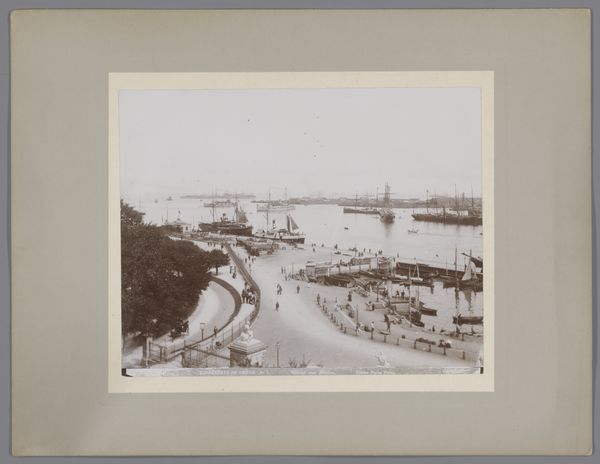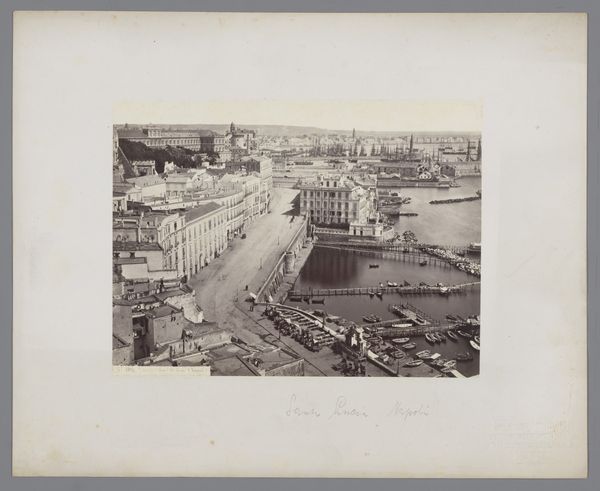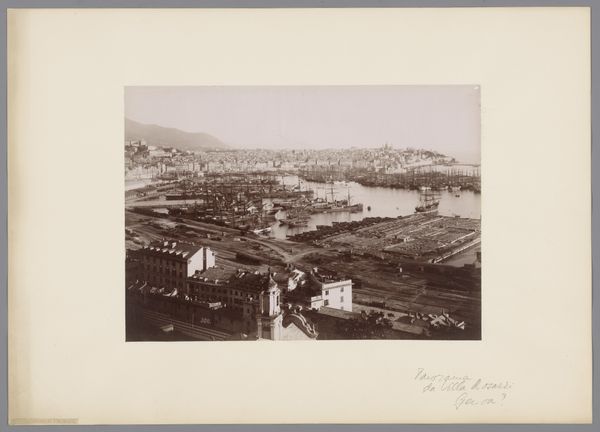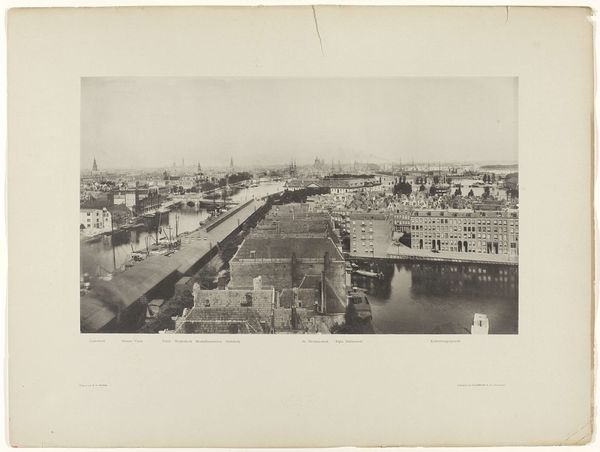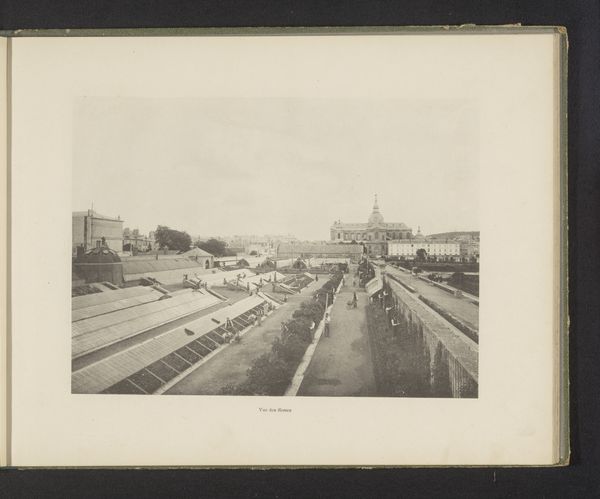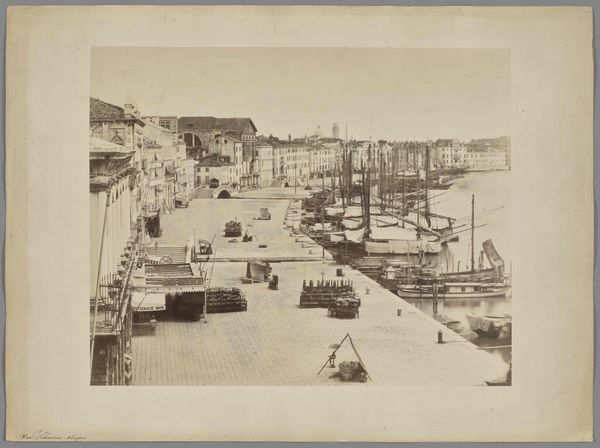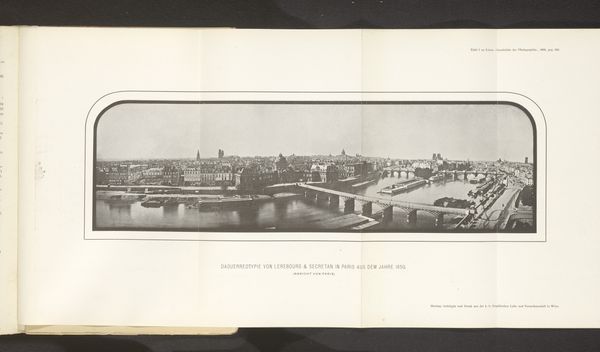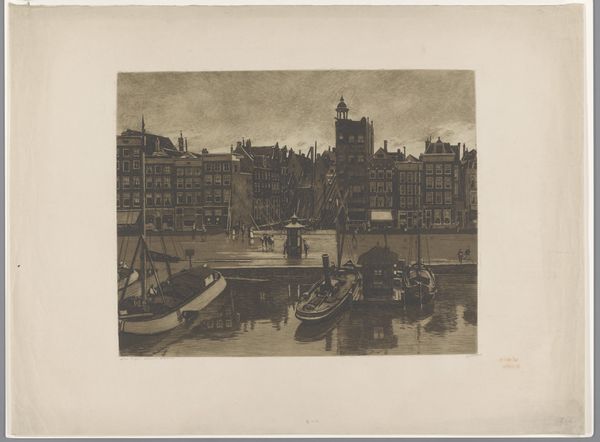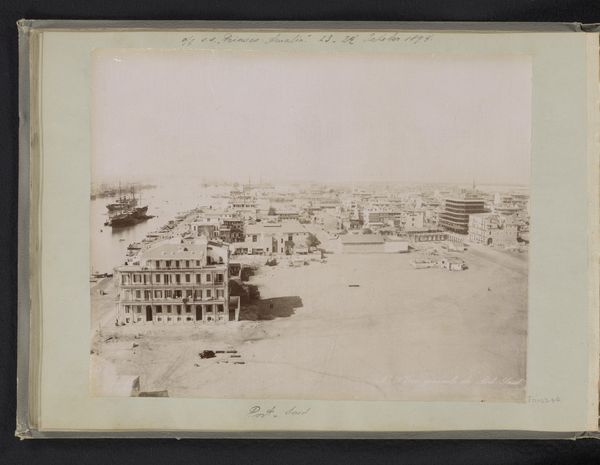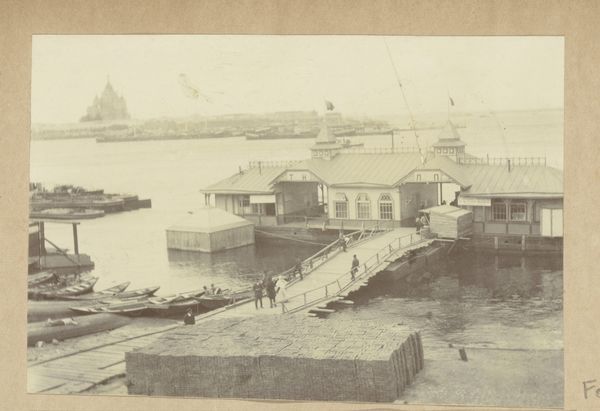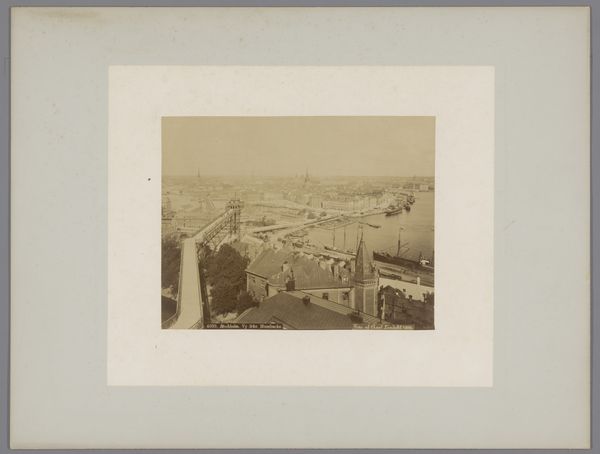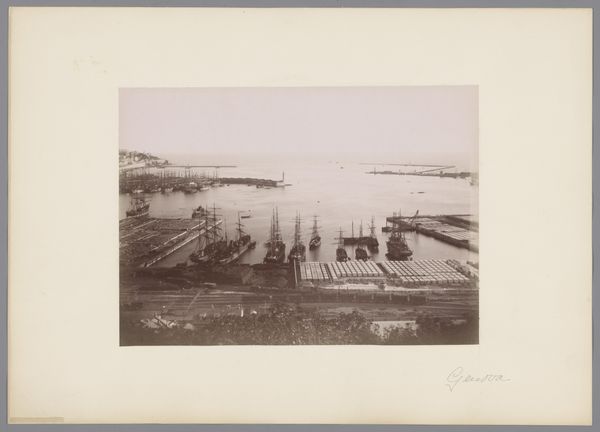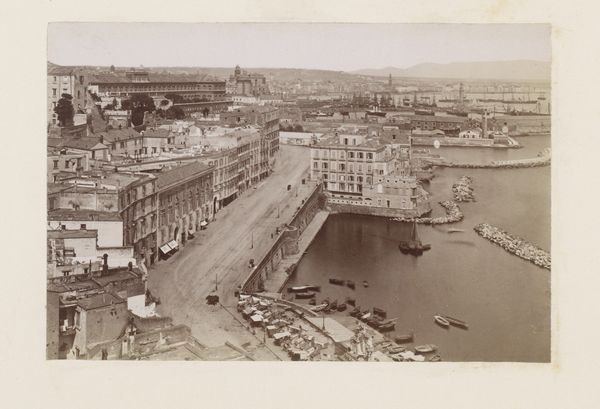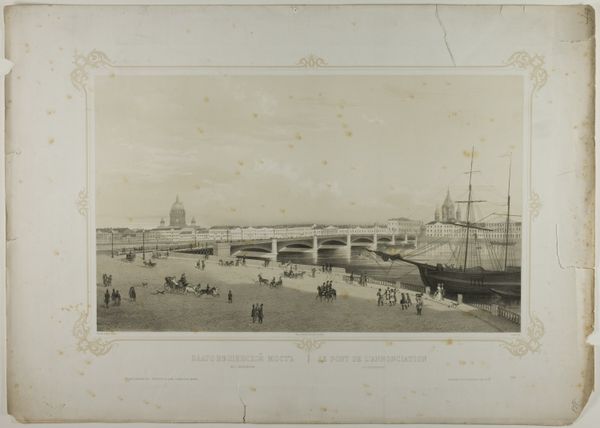
print, photography
#
pictorialism
# print
#
photography
#
cityscape
Dimensions: height 265 mm, width 350 mm
Copyright: Rijks Museum: Open Domain
Curator: This image is entitled "Gezicht op Duinkerke", or "View of Dunkirk," created in 1897 by Étienne Neurdein. It’s a wonderful example of a pictorialist print. Editor: Oh, immediately, it gives me this serene, almost melancholic feeling. The way the soft focus kind of mutes the scene is like peering into a memory, all hushed tones and indistinct shapes. Curator: Absolutely, the softness is key to Pictorialism! They deliberately sought to create photographs that resembled paintings or etchings, elevating photography to the realm of fine art. This view showcases a port city, rendered almost dreamlike. The technique and timing imbue what would otherwise be a simple cityscape with atmosphere and depth. It isn’t merely a photograph but a conscious artistic choice. Editor: It's true, you almost don’t register it as photography at first. All the hustle of a busy port town is there, I mean you see all these tiny figures and these boats, but it feels distilled, the frenzy calmed. You get more of the feeling of "port city" than the facts of one. Curator: Look at how the composition reinforces that sense of calm. Neurdein positions us high above the scene, creating distance. The tower anchoring the skyline, the receding planes of the docks… it draws our eye gently, like a memory we can never fully grasp. Even the sepia tones contribute to that, don’t they? Sepia washes so much in memory... Editor: The sepia is crucial, completely. Without it, it might just be an old picture, instead of, well, whatever *that* feeling is. As you mentioned the height, I wondered about Neurdein’s vantage point? How'd he get up so high for the shot? Hot air balloon maybe? To give that sense of an observing god? Curator: While that might add an additional metaphorical dimension, it was more likely the vantage point afforded him by a tall building near the harbor. The strategic selection to showcase his artistic perspective transforms the photograph into a contemplative study. He harnesses photography to explore the sensations of observing such a historical vista. Editor: That's a neat point! Overall, it's interesting how photographic processes can manipulate how we respond emotionally to a given view. "Gezicht op Duinkerke," for sure leaves an imprint. Curator: Definitely something to remember, as we consider how early photography became so easily intertwined with the art world!
Comments
No comments
Be the first to comment and join the conversation on the ultimate creative platform.
